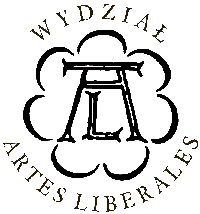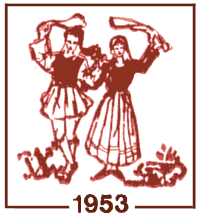| Testimony of: | icon |
| Source | Megas 1958, 122-125 (sv. May 21st, the feast of St. Constantine and St. Helena. The `Anastenaria'.) |
| Original text | [...] Here we must mention a peculiar custom which was primarily to be found in a small area near Agathoupolis, in Eastern Thrace, but which later spread to Macedonia, where the Greeks from this area settled after the exchange of populations effected in 1923. This custom or rather ceremony—is called `Anastenaria' , and was to be found in its most peg rt.'ct form in the small Thracian village of Kosti, which was closely associated with these two saints. The worshippers of St. Constantine—not all, but those only who are possessed by the Saint are called Anastenarides; they form a kind of religious brotherhood, headed by one of the older or more capable Anastenarides, called the Archianastenaris. The seat of this brotherhood is usually a particular building or a room set apart in the Chief Anastenaris' house. This is where the brotherhood guard the 'Graces' or 'Sires' (portable icons hung with bells picturing St. Constantine and St. Helena dancing together) for the whole duration of the feast. Dancing, as we shall see, is the fundamental element of the Anastenarides' cult. In this building or room, called `konak' (a Turkish word), the group also keep a variety of musical instruments throughout the year: the great sacred drum, the one-stringed fiddle, the flute and the bag pipe; there they also keep the sacred axe, the chopping-block and the knife which are to be used to kill the sacred bull. This bull is bought with the common funds of the group and sacrificed in great pomp on the Saint's nameday. Not any bull will do : it must be black, three years old, 'perfect' (not gelded), and untainted by the touch of harness. The place of worship in the village of Kosti used to be situated by the sacred springs of St. Constantine, ten minutes from the village. The springs were surrounded by a forest of oak-trees covering about ten acres and enclosed by a thick fence of oak trunks. On May 2nd the villagers began clearing the space surrounding the springs and cleaning the small building which housed the holy icons. When the cleaning was finished, the priest blessed and sprinkled the place with holy water; this was followed by folk-dancing for women only. Timber from the fence, amounting to about six or seven cartloads, was carried to the village square on the eve of the feast. This timber was intended for the great fire on which the Anastenarides would dance and the sacred bull would be cooked after the sacrifice. On the eve of the feast, the bull was led to the village church in pomp, escorted by the icons and the musicians, and crowned with coloured ribbons and flowers. He was tied up in the church courtyard until the moment of sacrifice. Towards evening, when all these preparations were completed, a procession headed by the musicians and the great drum left the `konak' and marched to the church. The Archianastenaris entered the church, kissed the icons of Christ and Mary, and handed the icons of St. Constantine and St. Helena to his fellow-anastenarides. The procession then went round the village, ending up at the village square, where one of the villagers set fire to the pile of oak-wood. Since the eve of the feast in the church courtyard together with several other victims, takes place after the service. The priest blesses the victims; with the Saint's icon the Chief Anastenaris makes the sign of the cross over the bull's head; then he proceeds to sacrifice it with care, so that the blood will flow over the foundations of the church. The raw meat of the victim is then distributed to the villagers; the bull's hide is cut in to broad strips and made into sandals, each family in the village being given a pair. The dancing on the square round the fire, the procession of the Anastenarides with their musical instruments through the village, and the all-night services in the church continue for eight days on end. During these eight days the holy signs are repeated : new candidates to membership of the brotherhood dance over the fire and are accepted as Ana stenarides. This entitles them to hang a lantern at their front door, signifying that this is the abode of an Anastenaris. It is also the custom to make nocturnal outings from one village to another, because the Saint (i.e. his icon) in one village must visit his 'brother' in the other village. The mountain roads are dotted with the flicker of torches, and the silence of the night is filled with the thud of the sacred drum and the shrill notes of the flute. The musicians are followed by the Anastenarides, still holding the sacred icons and dancing their strange, frenzied dance as they go. [...] The men and women of the village then gathered into another dancing-group encircling the Anastenarides, or sat down in a circle to watch. A profusion of wine and spirits helped to heighten the passionate spirit of the dance, until the Anastenarides, in a state resembling a trance, danced across the flames bare-footed, and sometimes trampled on the burning embers for several minutes. The dancing continued for many hours. While it lasted, some of the dancers or the onlookers would go into a kind of fit, or, to use the villagers' expression, were 'touched by the Saint'. Walking over the fire unhurt is one of the most weighty proofs of the dancer's holiness. The icon", say the villagers, "summons only him who is clean." Only such a man will the Saint possess, only through the mouth of such a man will he speak. After a few inarticulate cries, the frenzied dancer shouts : "Make your vows Make your vows to the Saint!" Upon hearing this, the onlookers promise various gifts to the church in the name of the Saint. Then the dancer cries : "Restore justice, lest the Saint destroy you." Each man tries to remember any injustice he may have committed in the past, in order to set it right. |
| Time/occasion of occurence | anasteraria |
| Region of occurence | Kosti, Macedonia |
| Function | ritual, symbolic, |
| Symbol in Kinetography score |
|


